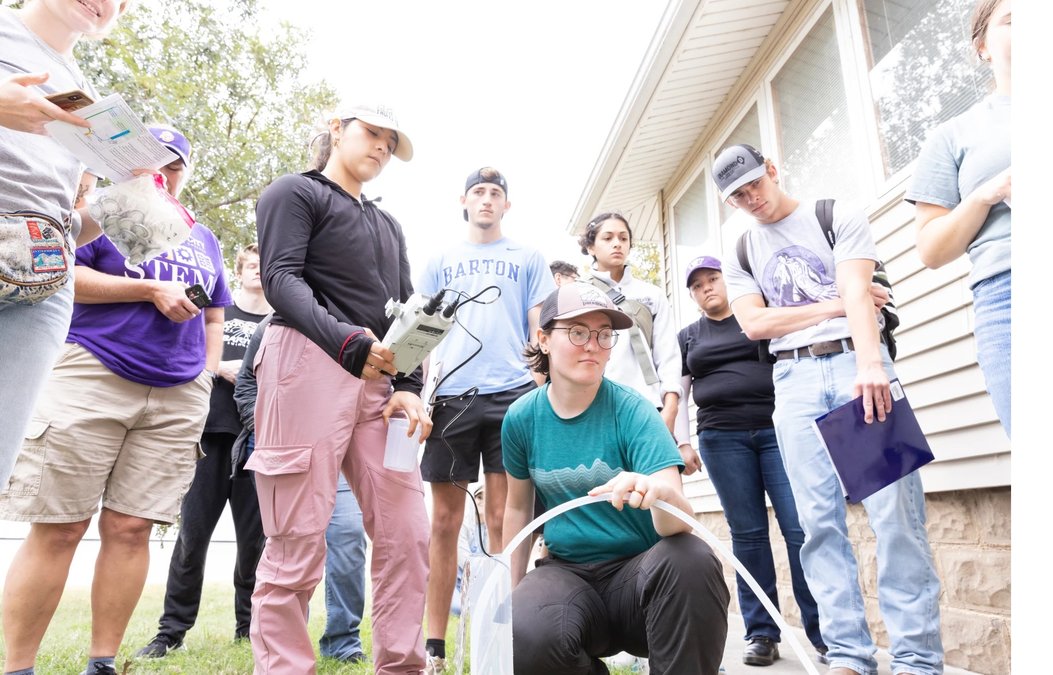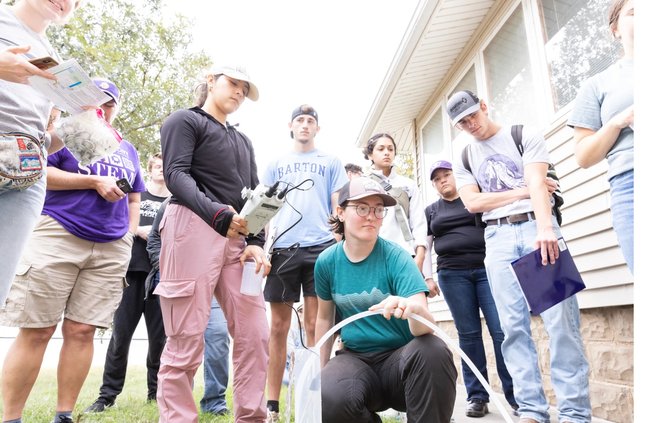Matthew Kirk has an unpleasant task: breaking the news to families about fertilizer chemicals in their drinking water.
The Kansas State University geology professor and his collaborators check for nitrogen pollution in the private wells that so many rural households depend on.
“Most of the well owners that I’ve talked to,” Kirk said, “this isn’t something that’s really on their radar.”
Researchers aim to test about 150 private wells in south-central Kansas in Barton, Stafford, Pawnee, Edwards, Rice, Pratt and Kiowa counties.
Students and scientists from K-State and Barton and Dodge City community colleges have teamed up to test about 90 so far.
Of those, half contain more nitrate than federal regulators allow in public water systems.
“Of those that didn’t,” Kirk said, “a lot of them were pretty darn close.”
One well contained more than five times as much nitrate as the federal government tolerates in public water supplies. That household has started treating the water before drinking it.
Drinking too much of these nitrogen compounds is dangerous for babies, and scientists are investigating suspected links to serious health conditions in children and adults, such as cancer.
Public water sources have to comply with federal standards, so utilities treat water to reduce nitrate levels when necessary.
But the same rules don’t apply to private wells, and people often don’t know what their groundwater contains.
Meanwhile, decade by decade, chemicals accumulate.
In 2016, K-State researchers checked water quality in south-central Kansas wells that had also undergone testing 40 years earlier.
“We’re seeing nitrate increases that are massive,” Kirk said, adding that they are “among the biggest” when compared to long-term data from a similar national study.
The stakes for human health
Farms and livestock facilities rank among the top sources of the nitrogen pollution spilling into U.S. waterways and seeping into groundwater.
Above ground, scientists at the University of Kansas and elsewhere find this runoff makes the blue-green algae on many bodies of water increasingly toxic. These toxic blooms poison thirsty animals, spoil weekend plans at the lake and increase the cost of treating public drinking water.
Below ground, in aquifers, the effects of nitrogen call less attention.
Part of the problem: It’s not easy to collect large datasets of chemical analyses from private property. Not everyone tests their wells, and if they do, there’s no centralized database where members of the public and academic researchers can see what they found.
But public health experts continue to dig.
Scientists at the University of Nebraska Medical Center are investigating areas with troubling patterns of childhood cancer. They’re trying to understand whether groundwater contaminated with nitrate and atrazine (the second most common farm herbicide in the U.S.) could play a role.
Nitrate contamination contributes to blue baby syndrome. And scientists continue to scrutinize correlations with thyroid disease, premature births and more.
The questions about health effects leave some scientists uneasy with the Environmental Protection Agency’s current standard for nitrate levels in public water supplies.
The agency allows up to 10 milligrams of nitrate per liter of water.
In Kansas, an estimated 150,000 to 175,000 people use groundwater from private wells. No one knows how many of them treat it first.
Families that depend on private wells can consider several treatment options of varying effectiveness, with prices ranging from hundreds to thousands of dollars.
Kirk often points well owners to a guide from the Minnesota Department of Health that explains each home water treatment approach and typical price tags.
What can people do?
In south-central Kansas, K-State’s analysis of water samples indicates that most of the nitrate pollution comes from chemical fertilizers sprayed onto cropland.
Despite advances in technology that help farmers apply the stuff more precisely, the contamination persists.
Wells in the area pull water from the Great Bend Prairie Aquifer.
On the whole, this groundwater is relatively close to the surface, and the ground above it is relatively permeable, Kirk said.
That means nitrates trickle into the aquifer faster than, say, into the Ogallala aquifer farther west.
U.S. Geological Survey
However, Kirk warns that nitrogen pollution could worsen in the Ogallala, too, even if it takes longer.
K-State researchers plan to share their well water data from south-central Kansas with the Kansas Geological Survey and the Kansas Department of Health and Environment — agencies that monitor groundwater issues.
As some aquifers shrink, it could exacerbate the problem of nitrogen pollution by concentrating the chemicals in less water.
More people using private wells will either need to treat their water or drink troubling levels of nitrate.
Already, the EPA estimates that about one-tenth of the land in Kansas has groundwater with nitrate levels that exceed 10 milligrams per liter.
Meanwhile, small-town and rural water systems — which have tight budgets but must comply with the same federal nitrate limit that applies to larger public water sources — will struggle to handle this.
Haviland, with a population of less than 700 people, had to build a $2.4 million treatment facility. This nearly tripled residents’ water bills.
“This is going to make it hard to sustain a lot of rural communities,” Kirk said, “who aren’t going to be able to afford a big, fancy treatment plant.”
By - Celia Llopis-Jepsen
Kansas News Service
more reading on water issues in the Golden Belt
K-State students find high nitrates in local water
KU Geological Survey report assesses High Plains Aquifer





